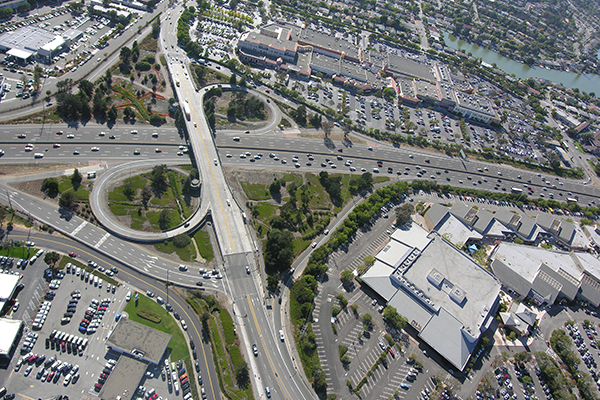Navigating Project-Induced VMT on a Budget
Navigating Project-Induced VMT on a Budget
In 2022, Caltrans modified their approach to Vehicle Miles Traveled (VMT) calculations, impacting projects along California’s state highway system. To meet strict California Environmental Quality Act (CEQA) requirements, projects must now find creative, cost-effective solutions to reduce induced VMT in alignment with the project’s purpose and need. Generally, Caltrans will not approve a Statement of Overriding Considerations related to induced VMT impacts in the CEQA Transportation section unless all feasible mitigation measures have been implemented. The list of feasible measures is long, and in some instances the cost of implementing these measures on a project can exceed the actual construction cost of the project itself!
In an attempt to achieve a less-than-significant impact with respect to induced VMT, many projects are exploring solutions that mitigate minor CEQA induced VMT impacts. However, doing so may trigger public and agency comments as well as challenges by project opponents. Project sponsors and project engineering/planning teams should anticipate heightened scrutiny from Caltrans, the California Air Resources Board (CARB) who recently began writing CEQA comment letters on induced VMT, particularly related to Traffic Operations Analysis, and CEQA Transportation, Air Quality, Greenhouse Gas, and Energy section analyses.
With induced VMT analysis and mitigation still being an evolving practice, identifying acceptable tried-and-true mitigations in this more scrutinized climate can be an opportunity for success in delivering projects through the PA&ED phase. With a goal of avoiding costly mitigation strategies, Fehr & Peers recently completed three state highway system projects that successfully navigated the Caltrans review procedures and crafted cost-effective measures that fully mitigated project VMT impacts. We found lane swaps to be a low-cost, low-effort VMT mitigation measure that was extremely effective in aligning with local agency priorities for multimodal transportation and standing defensible for CEQA purposes.
Successful Mitigations
Merced, CA
This was the first project in California to successfully mitigate its induced VMT impacts in the new Caltrans Headquarters review procedure. While the project included several bicycle and pedestrian network improvements, roadway widening was projected to result in a significant induced VMT impact. Fehr & Peers proposed a lane swap (reducing lane-miles on uncongested facilities to allow additional capacities at needed locations), which achieved a one-to-one ratio for lane-miles added by the project and lane-miles reduced on two roadway segments located in Downtown Merced.
Using the National Center for Sustainable Transportation (NCST) VMT Calculator, our team quantified the project’s effect on induced VMT and VMT reduction achieved by this mitigation. The VMT calculator is a publicly available tool that estimates induced VMT, as identified by the Caltrans Transportation Analysis Framework (TAF). Coming full circle, the City prepared a traffic analysis confirming that the proposed lane reduction met traffic demands for the area.
I-5/Louise Avenue Interchange and SR 120/Yosemite Avenue Interchange Projects
Lathrop, CA
Both projects proposed increased capacity at the interchange on-ramps, off-ramps, and ramp terminal intersections. In coordination with the City, our project team identified the opportunity to add a lane reduction component to a local roadway facility already funded for active transportation improvements. This highly cost-effective mitigation measure not only met Caltrans requirements, but it further improved safety and comfort for active transportation users along the corridor.
Because the interchange projects did not include additional lane capacity on the freeway or highway mainline, each projects’ effect on induced VMT could not be quantified with the NCST calculator, and the lane reduction could not be measured by trading lane-miles. Following TAF guidance, we successfully utilized a locally validated travel demand model that we developed in-house to quantify both projects’ effect on induced VMT and the VMT reduction achieved by the mitigation measure.
Funding Considerations
Recent decisions by federal and state agencies indicate that mitigation costs can be included in the project’s overall cost for grant (and other funding) purposes. Implementing low-cost VMT mitigation measures can enhance the benefit/cost ratio, making it easier to secure project funding while minimizing Caltrans and CEQA review time.
Contact us to learn more about cost-effective VMT analysis and mitigation solutions for your projects.
Contributors

Albee Wei
Senior Transportation Planner

Ian Barnes
Principal

Ron Ramos
Traffic Operations Practice Leader

Ron Milam
Forecasting Practice Leader

Jason Pack
Principal

Paul Herrmann
Senior Associate

Diwu Zhou
Associate


